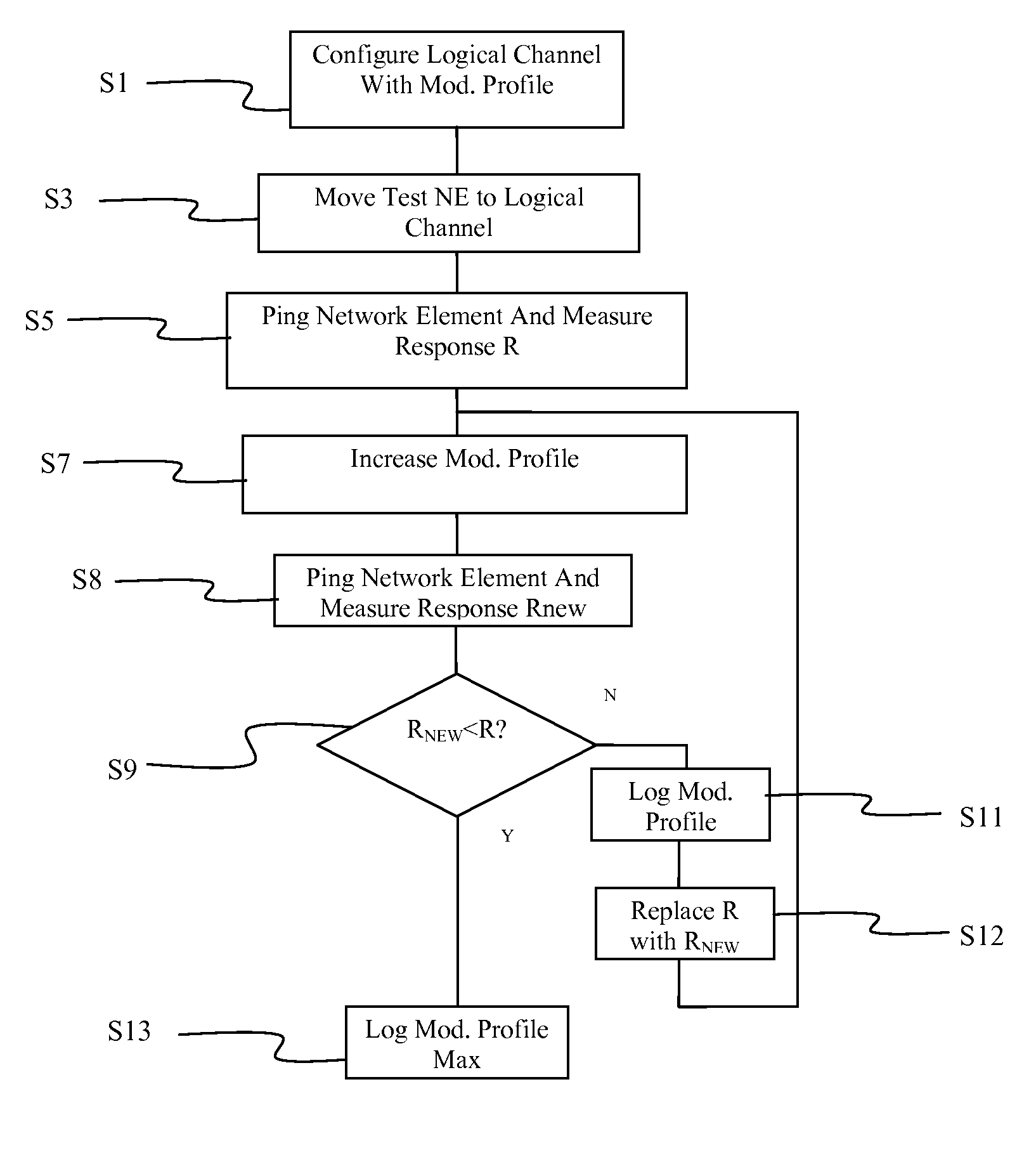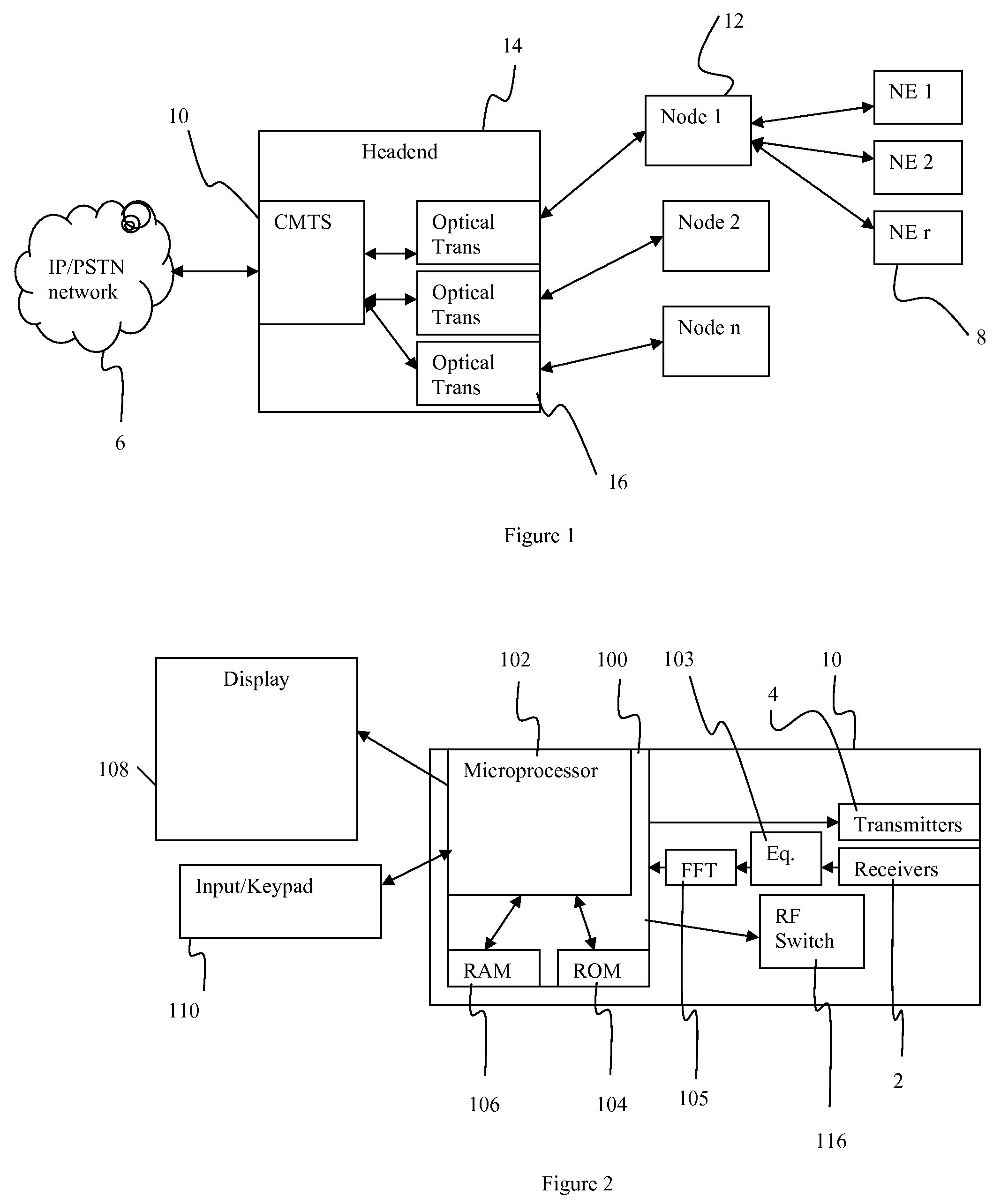Method and apparatus for determining modulation levels that are supported on a channel
a modulation level and channel technology, applied in the field of channel prediction, can solve the problems of difficult management and monitoring of complex networks, poor solution of third approach, and inconvenience of voice or data traffic disruption,
- Summary
- Abstract
- Description
- Claims
- Application Information
AI Technical Summary
Problems solved by technology
Method used
Image
Examples
Embodiment Construction
[0019]The invention allows an operator to determine the modulation levels that are supported by network elements on a network. The invention allows an operator to remotely test a network element's ability to communicate on various modulation levels without significant impairment of a user's communications. For example, a network element's ability to communication using modulation levels such as QPSK to 8QAM, from 8QAM to 16QAM, from 16QAM to 32QAM, from 32QAM to 64QAM, from 64QAM to 128QAM, or from 128QAM to 256QAM may be tested. In the present invention, the operator has preferably deployed active services and is running upstream port configurations with at least one unused logical channel. Notably, DOCSIS 2.0 requires support for 4 logical channels.
[0020]In a preferred implementation, the selected network elements are serviced by, or reside on, the same optical node or serving group. A methodology for isolating devices which reside on the same optical node or serving group is prov...
PUM
 Login to View More
Login to View More Abstract
Description
Claims
Application Information
 Login to View More
Login to View More - R&D
- Intellectual Property
- Life Sciences
- Materials
- Tech Scout
- Unparalleled Data Quality
- Higher Quality Content
- 60% Fewer Hallucinations
Browse by: Latest US Patents, China's latest patents, Technical Efficacy Thesaurus, Application Domain, Technology Topic, Popular Technical Reports.
© 2025 PatSnap. All rights reserved.Legal|Privacy policy|Modern Slavery Act Transparency Statement|Sitemap|About US| Contact US: help@patsnap.com



